Que recherchez-vous ?
Un contenu sur ce site
Une personne sur l'annuaire
Une formation sur le catalogue
Un contenu sur ce site
Une personne sur l'annuaire
Une formation sur le catalogue
Inserm U1070 “Pharmacology of Antimicrobial Agents and Antibiotic Resistance” is oriented towards Europe!
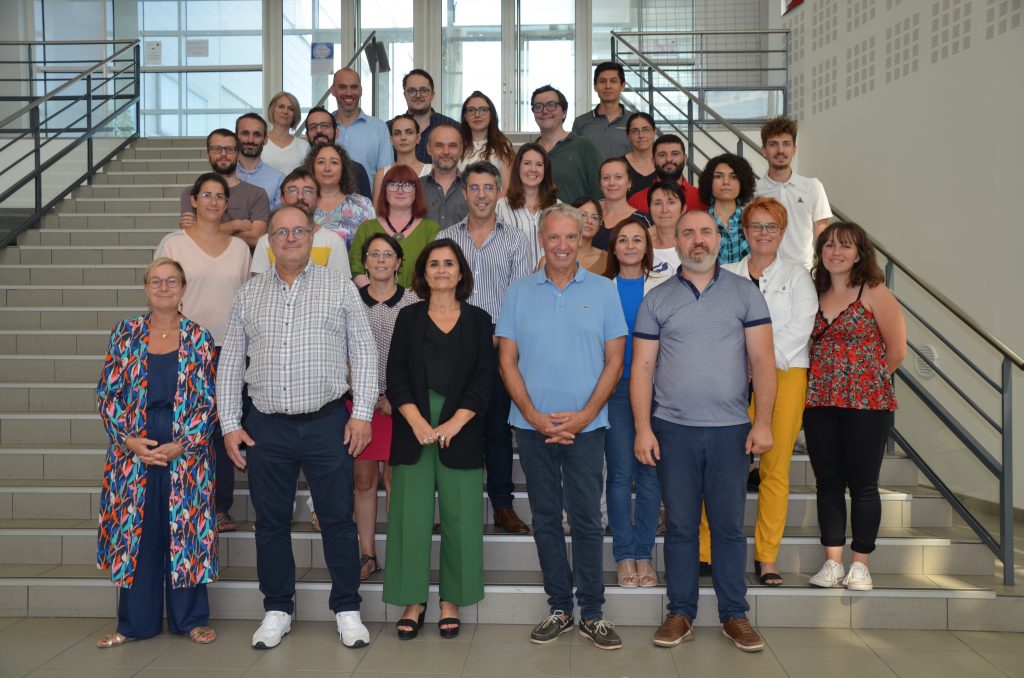
Founded in 2012, INSERM U1070, affiliated with the University of Poitiers, is a dynamic research unit composed of 20 permanent staff members, including clinicians, pharmacists, and scientists, supported by a vibrant cohort of 13 doctoral and master’s students.
Our mission is to optimize antibiotic usage with a focus on three critical objectives:
To achieve these goals, we pioneer cutting-edge pharmacokinetic/pharmacodynamic (PK/PD) modeling techniques to identify optimal dosing regimens for antibiotics, whether used individually or in combination. Our research extends to exploring innovative routes of administration and advanced drug formulations to improve therapeutic outcomes.
INSERM U1070 bridges the gap between bench and bedside through a translational research approach that integrates microbiology, analytical chemistry, drug formulation, and preclinical in vivo studies. From cellular models to clinical applications, we ensure our work has a tangible impact on patient care.
Our efforts are backed by prestigious grants from organizations including Région Nouvelle-Aquitaine, ANR, PHRC, JPIAMR, IMI, and CPER-FEDER, enabling us to advance scientific frontiers. Collaborations with ANSES, French institutions like Pasteur institute, MMSB lyon, IPBS Toulouse and international partners such as Leiden University, Uppsala University, Hamburg University, Zurich university and the Vienna university, alongside leading pharmaceutical companies, further amplify our reach and innovation.
By fostering a multidisciplinary and global approach, INSERM U1070 is at the forefront of shaping the future of antibiotic therapies.
Full Name: Cerebral Antibiotic PBPK/PD Optimization and Evaluation of Innovative Regimens against Antibioresistance in ICU patients with cerebral infections
Acronym: CAPOEIRA
Funded by:
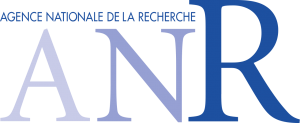
Coordinator: Alexia CHAUZY
U1070 Scientific Leader: Alexia CHAUZY
In collaboration with:
Duration: 2024 – 2028
Total cost of the project: 295 k€
Specific U1070 cost: 295 k€
Summary:
Nosocomial central nervous system (CNS) infections in intensive care unit (ICU) patients remain therapeutically challenging because of drug- and disease-related factors that contribute to suboptimal antibiotic concentrations in CNS. Moreover, antibiotic dosing regimens recommendations for meningitis treatment are currently based on generic pharmacokinetic/pharmacodynamic (PK/PD) targets that have not been specifically defined for the treatment of CNS infections. Therefore, a better knowledge of antibiotic CNS distribution and PK/PD relationship is crucial to treat such infections and to prevent resistance. The objective of the project is to optimize antibiotic exposure in ICU patients with CNS infections by developing new approaches including physiologically based pharmacokinetic/pharmacodynamic (PBPK/PD) models. First, a generic PBPK model characterizing the CNS distribution of 9 antibiotics with different physicochemical properties will be developed with plasma and cerebrospinal fluid (CSF) concentrations previously measured in infected and uninfected patients. The PBPK model will be used to quantify the impact of infection on CNS penetration and to search for relationships between antibiotic characteristics and their CNS distribution to extrapolate model predictions to other antibiotics. Thereafter, human CSF concentrations simulated with the PBPK model will be reproduced in artificial CSF in a dynamic hollow-fiber infection model over several days to quantify the effect of some selected antibiotics on reference and clinical strains. Different dosing regimens will be tested, and resistance mechanisms will be investigated by whole genome sequencing and RT-qPCR. Finally, semi-mechanistic PK/PD modelling techniques will be applied to link the antibiotic unbound CSF concentrations with their antimicrobial effect. The resulting so-called PBPK/PD model will be used to find the most promising dosing regimens for the treatment of difficult-to-treat CNS infections.
Hired Personnel: 1 PhD student, 1 Master 2 student and 1 technician
Associated Publications :
Acronym: FICuS
Full Name: Fight nosocomial Infections with Cu-based Salts
Funded by:

Coordinator:
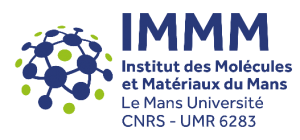 |
IMMM (UMR 6283 CNRS), Le Mans (G. Corbel) |
U1070 Scientific Leader: Julien BUYCK
In collaboration with:
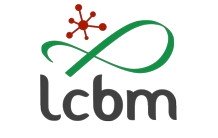 |
LCBM Promit (UMR 5249 CEA-CNRS), Grenoble (T. Rabilloud) |
Duration: October 2023 – September 2027
Total cost of the project: 473 k€
Specific U1070 cost: 147 k€
Summary :
Bacterial pathogens causing Nosocomial Infections (NIs) pose increasing challenges to hospitals due to their increasing resistance to antibiotics. Metallic surfaces and fabrics in physical contact with infected patients are contaminated. Bacteria can proliferate on these substrates increasing the risk of infecting other patients, healthcare workers and visitors if they touch them. The surfaces and fabrics developed in the FICuS project are designed to kill bacteria while being detergent-resistant, non-toxic for humans and eco-friendly. To make these substrates self- disinfecting, the project proposes to use non-soluble salts with a low mass concentration of copper as safer bactericidal agents.
Hired Personnel: A Post-doctoral researcher and a Master2 student (To be hired)
Associated Publications :
Full Name: Développement et évaluation d’une nouvelle classe d’antifongiques couplés à des sidérophores pour lutter contre les résistances aux antifongiques (DACOSID).
Development and evaluation of a new class of siderophore-coupled antifungals to combat antifungal resistance (DACOSID).
Acronym: DACOSID.
Funded by:
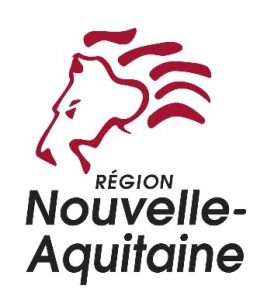 |
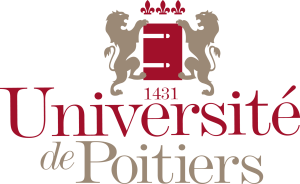 |
Coordinator: INSERM U1070 PHAR2 (Poitiers), Kévin Brunet
U1070 Scientific Leader: Kévin Brunet
In collaboration with:
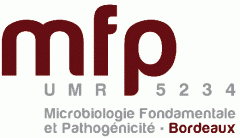 |
MFP (UMR 5234 Bordeaux) |
 |
@rtmolecule (Poitiers) |
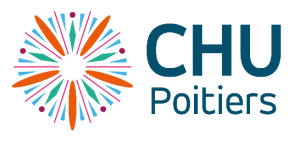 |
CHU de Poitiers (Poitiers) |
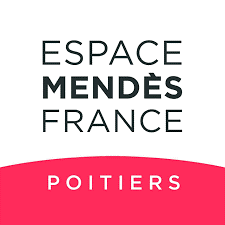 |
Espace Mendès-France (Poitiers) |
Duration : 2023 – 2026
Total cost of the project: 120 000 €
Specific U1070 cost: 120 000 €
Summary :
Invasive fungal infections are responsible for high morbidity and mortality in hospitalized patients. Unfortunately, the incidence of these infections has been increasing for several years. These infections are usually treated with azole antifungals, but resistance to these antifungals is increasingly being found. Overexpression of efflux pumps and/or the azole target appear to be the first resistance mechanisms to be activated. A potential approach to combat these resistance mechanisms could be to increase the penetration of azoles into fungal cells. To achieve this goal, it could be possible to use a “Trojan Horse” strategy which would consist of linking an azole to a siderophore in order to make the azole penetrate into the fungus through the siderophore transporter, as has been successfully done to combat resistant bacteria (cefiderocol). The aim of this study will therefore be to link azole antifungals to fungal siderophores in order to generate new antifungal drugs and to evaluate their efficacy against azole-susceptible and azole-resistant strains of Candida and Aspergillus.
These antifungals will be generated with the support of a regional industrial partner (ArtMolecule). We will then evaluate their efficacy on a large panel of clinical azole-susceptible and azole-resistant strains (U1070 PHAR2), with the support of the Poitiers University Hospital which will provide access to the clinical strains. To better understand the mechanism of action of these new antifungals, these molecules will be tested by our regional academic partner, the “Candida and pathogenicity” team at the MFP laboratory in Bordeaux, on various mutant strains, each having a different resistance mechanism. All the data obtained will then be included in a PK/PD model to understand the efficacy of these new molecules (U1070 PHAR2). Finally, a part of the project will be devoted to science-society interactions with various communications supported by the Espace Mendès France, particularly on the “One Health” environmental aspect.
This project is part of the drive to improve Health and understand “One Health” phenomena, two of the challenges of the Nouvelle-Aquitaine region. It will structure relationships between research units within the region, structure synergistic “industrial world – academic world” relationships within the region and structure science-society interactions.
Hired Personnel: Adrien Baillod – PhD Student
Full Name: Deciphering the mechanisms of Carbapenem resistance propagation by studying conjugative Plasmid transfer
Coordinator:
 |
MMSB, CNRS UMR5086, Lyon, France (S. Bigot) |
U1070 Scientific Leader: Julien BUYCK
In collaboration with :
 |
MAP (UMR5240) CNRS/INSA, Lyon (E. Gueguen) |
Duration : October 2023 – September 2026
Total cost of the project: 485 k€
Specific U1070 cost: 137 k€
Summary :
In recent years, the global emergence of multi-drug resistant (MDR) bacteria has become a major public health problem and a priority for microbiology research. Resistance determinant are mainly carried by conjugative plasmids whose transfer from bacterial cell to cell accounts for 80% of acquired resistance. Investigating fundamental aspect of conjugation process to obtain informative knowledges is needed to find new ways to stop antimicrobial resistance (AMR) dissemination and prevent the emergence of new MDR bacteria. In DeCa-P project, we intend to focus on the understanding of AMR dissemination by studying the transfer mechanism of the pOXA-48a conjugative plasmid, encoding an OXA-family carbapenemase, which is at the origin of the dissemination of carbapenem resistance among Enterobacteriaceae due to its wide spread. Despite its rising incidence and the investigation of its molecular epidemiology, the pOXA-48a plasmid but also related IncL plasmids are poorly characterized.
Hired Personnel: Sophie Marolleau (PhD Student)
Full Name: Pulmonary Administration of Antibiotic Nano-emulsion to treat gram-negative bacteria InfeCtions
Acronym : PAANIC
Funded by : 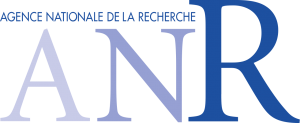
Project webpage : https://anr.fr/Projet-ANR-21-CE18-0054
Coordinator: ANTON Nicolas, Nanomédecine régénérative, UMR INSERM 1260, Strasbourg, France
U1070 Scientific Leader: Frederic TEWES
In collaboration with: – COLLOT Mayeul, Laboratoire de bioimagerie et pathologies (LBP), UMR CNRS 7021, Strasbourg, France
– HENRY Thomas, Centre International de Recherche en Infectiologie (CIRI) / INSERM U1111, Lyon, France
Duration: 09/2021 – 04/2026
Total cost of the project: 483 k€
Specific U1070 cost: 177 k€
Summary:
MDR pneumonia-causing bacteria such as P. aeruginosa, A. baumannii and K. pneumoniae are extremely difficult to treat, and resistance to antibiotics of last resort (ATBs) such as colistin is increasingly being reported. We have recently observed that certain terpenes and fatty acids, used as adjuvants, enhance the efficacy of colistin. For clinical use, these lipophilic adjuvants can be loaded into lipid nanoparticles (LNPs). These LNPs can co-deliver colistin and adjuvant, in an optimal ratio, directly to the site of infection. In addition, LNPs can improve the diffusion of ATBs in biofilms. The aim of this project is to formulate different LNPs loaded with colistin and lipophilic adjuvant and to select them on the basis of their efficacy, stability, diffusion in biofilms and mucus, and aerosolisation capacity. The pharmacokinetics and efficacy of the selected LNPs will be examined in preclinical rodent infection models.
Hired Personnel: Farras Daffa Imtiyaz (PhD Student)
Associated Publications :
Acronym: Seq2Diag
Full Name: Whole genome sequencing and artificial intelligence to characterise and diagnose antibiotic resistance and capacity to escape treatment.
Funded by:
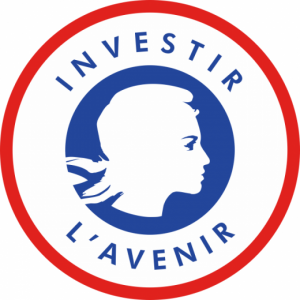 |
PPR antibiorésistance |
Coordinator:
 |
Institut Pasteur, EERA Unit, Philippe Glaser |
U1070 scientific Leaders : Nicolas Grégoire and Julien Buyck
In collaboration with:
 |
Institut Pasteur, InBio, G. Batt |
 |
CNRS Laboratoire de recherche en infromatique, Université Paris Saclay, (F. Jay) |
| INSERM, Délégation régionale Paris 11, U1184 RESIST Team (T. Naas) | |
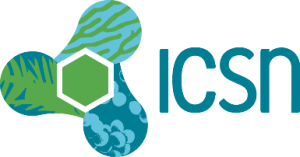 |
CNRS, Délégation Ile-de-France Gif-sur-Yvette – Institut de Chimie des Substances Naturelles (B. Iorga) |
 |
INSERM U1092 – Anti-infectieux : Supports moléculaires des résistances et innovations thérapeutiques (O. Barraud) |
 |
Université de Franche-Comté, UMR 6249 Chronoenvironnement, (P Plesiat) |
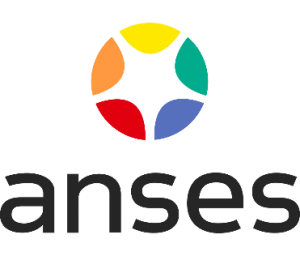 |
Anses, Unité Antibiorésistance et virulence bactériennes (JY Madec) |
Duration: June 2022 – May 2025
Total cost of the project: 2202 k€
Specific U1070 cost: 295 k€
Summary :
Antibiotic susceptibility determination is a key step in the optimization of anti-bacterial therapy. Current methods are based on the inhibition of bacterial growth in the presence of increasing concentrations of antibiotics. These tests are sometimes combined with molecular biology techniques to better characterise resistant strains. The objective is to obtain results as quickly and accurately as possible at an acceptable cost. Improving diagnosis is an important issue in the fight against antibiotic resistance and the proper use of antibiotics. The sequencing of the whole genome of a bacterium (WGS) theoretically makes it possible to predict its resistance phenotype, tolerance and persistence capacity, according to growth conditions. However, predicting a phenotype from the genome is notoriously difficult and high performance is mandatory for medical applications.
This prediction can be made on the basis of the properties of the detected genes and the presence of mutations in genes associated with antibiotic resistance. However, methods without a priori, based on artificial intelligence (AI) seem to be more effective. Accuracy depends on the bacterial species and the antibiotic. In order to be adopted, in silico antibiotic susceptibility testing has to face (i) technological challenges of cost, speed and flexibility that companies must meet,(ii) methodological challenges of reliability and (iii) organizational constraints for its implementation in clinical laboratories. In order to establish a proof of concept, we formed a consortium of laboratories with expertise in antibiotic resistance, diagnosis and clinical microbiology in humans and animals, expertise in bacterial genomics, evolution, automation, bioinformatics, modeling and AI. We have selected three Gram-negative species among the most problematic in terms of multiresistance: Escherichia coli, Klebsiella pneumoniae and Pseudomonas aeruginosa.
The research program is organised around 5 tasks. Firstly, we will establish genomic databases from existing and prospectively obtained isolate collections to better analyse the genotype phenotype relationship, the impact of antibiotic pressure on the evolution of isolates in hospitals and the causes of treatment failure. On these isolates, we will evaluate the prediction methods already published. We will develop advanced phenotyping methods to analyse the response tontibiotics and antibiotic combinations, to quantify tolerance persistence, and pharmacodynamics parameters that contribute to treatment escape and will be included in the model. We will develop, from these data, new AI methods for phenotype prediction and will characterise the genes and mutations contributing to discrepancies between prediction and phenotype. Finally, we will seek to establish a proof-of-concept for the use of in silico antibiotic susceptibility testing in clinical microbiology laboratories.
This project will improve the prediction of the resistance phenotype and will evaluate the interest and place of the WGS in bacteriological diagnosis, especially for difficult infections that escape treatment. The discrepancies observed between the phenotypes predicted by genomic analysis, by AI and those observed in different environments will be used to identify new mechanisms contributing to antibiotic resistance.
Hired Personnel: 1 Technician, Tom Collet, 2 M2 (to be hired)
Associated Publications :
Population pharmacokinetic-pharmacodynamic stuudy of 7 broad-Spectrum anti-infective agents in the cerebro spinal fluid of brain injured patients with external ventricular drainage
Funded by : 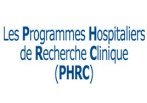

In collaboration with :
CHU de Poitiers, Poitiers, France
Duration :
2019 – 2022
Summary :
The aim of this study is to describe PK of 7 antibiotics (cefepime, ceftazidime, linezolid, meropenem, vancomycin, colistin and daptomycin) in cerebrospinal fluid (CSF) of patients with external ventricular drainage using PK/PD approaches. The study includes around 20 centers across France. The inclusions were started at the beginning of 2019, and will be extended in 2021 (inclusion deadline delayed in connection with the COVID-19 pandemic).
Optimization and implementation of ceftazidime or ceftazidime-avibactam combined with fosfomycin against highly resistant gram-negative bacteria
Funded by : 
Coordinator: Sandrine MARCHAND
In collaboration with :
IRCCS Azienda Ospedaliero-Universitaria di Bologna, Unit of Infective Diseases, Bologna, Italy (M. Giannella)
University of Hamburg, Institute of Pharmacy, Hamburg, Germany (S. Wicha)
School of Public Health, Faculty of Health Sciences, Ben Gurion University of the Negev, Israel (J Moran-Gilad)
Instituto de Biomedicina de Sevilla (IBiS), Hospital Virgen Macarena/CSIC/Universidad de Sevilla, Sevilla, Spain (F. Docobo-Perez)
University of Geneva / Geneva University Hospitals, Geneva, Switzerland (G. Huttner)
Duration :
2023 – 2026
Summary :
Carbapenemase-producing Enterobacterales are a major health problem. One of the few treatment options is ceftazidime/avibactam. However, relapse of infection may occur, often associated with resistance development. Empiric use of continuous infusion and combination therapies, in particular the addition of fosfomycin to ceftazidime/avibactam, seems to be associated with improved outcomes as compared to ceftazidime/avibactam alone. Indeed, in preclinical models, fosfomycin is often highly synergistic and reduced resistance development is observed in combination with beta-lactams. Yet, the dosing rationale is unclear and massive doses of up to 24 g of fosfomycin are empirically used, frequently leading to sodium overload. The aim of the present project is to define and implement a rational dosing regimen for the combination of ceftazidime or ceftazidime/avibactam with fosfomycin against Enterobacterales. Therefore, we will use state-of-the-art preclinical PKPD models (hollow-fibre, humanized-PK mouse model) with patient-derived bacterial isolates and pharmacometrics to define optimised dosing regimens. Using whole genome sequencing/artificial intelligence, we will define the link between genetics and the phenotypic bacterial susceptibility as well as synergistic effects, which could be developed into a rapid test to rapidly identity patients that will benefit most from the optimised combination treatment. Lastly, we will implement the optimised, pharmacometrics-guided dosing approach in a proof-of-concept controlled trial.
Video:
New Inhalation Formulations for Improved Delivery of Antimicrobials
Funded by : 
Coordinator: Institute of Medical Microbiology, University of Zurich, Zwitzerland (S. Hobbie)
U1070 Scientific Leader: Frédéric TEWES
In collaboration with :
Fraunhofer ITEM Dept. Preclin. Tox, Hannover, Germany (D. Winterberg)
CIDETEC, Donostia, Spain (I. Loinaz)
Latvian Inst. Org. Synth. Pharmac. Pharmacol, Riga, Latvia (E. Liepins)
RISE Research Institutes of Sweden AB, Pharmaceutical Develop, Stockholm, Sweden (A. Fureby)
Inhalation Sciences AB, Huddinge, Sweden (P. Gerde)
Duration :
2023 – 2026
Summary :
Antimicrobial drug delivery by inhalation has gained increasing popularity over the past decade, with a purpose of resulting in higher drug concentrations in the respiratory tract when compared to oral or parenteral routes of administration, achieving highly efficacious exposures in the treatment of lower respiratory tract infections (LRTI). However, developing inhalation formulations is demanding and requires technologies to overcome a variety of hurdles and limitations. In the treatment of hospitalized patients with acute LRTI, simple nebulization of injectable drugs is used as an “off-label” method for inhalation, resulting in suboptimal delivery due to inefficient penetration to the site of infection and into biofilms. Innovative formulations, including nanoparticles, have therefore been developed to improve drug deposition at the sites of infection, enhance biofilm penetration, and increase the drug exposure in the relevant sites of infection by controlling drug release and clearance. This has been successful for antibiotics targeting Pseudomonas aeruginosa and in the treatment of chronic LRTI. However, to date no powerful inhalation formulations targeting other pathogens and for the treatment of acute LRTI in hospitalized patients has been developed. Here we propose to utilize the latest advancements in formulation technologies to develop five distinct inhalation formulations of apramycin and competitively evaluate their pharmacokinetics, safety, and efficacy in an Acinetobacter baumannii animal infection model, providing a case study for other antimicrobials as well.
Full Name: Optimization of Antibiotic Combinations using Organoids for treatment of Mycobacterium abscessus infections.
Coordinator: Julien BUYCK
In collaboration with :
Duration : June 2023 –May 2026
Total cost of the project: 1038 k€
Specific U1070 cost: 239 k€
Summary :
Mycobacterium abscessus (Mabs) is an emerging opportunistic pathogen responsible for lung infections particularly in cystic fibrosis patients. These infections are challenging worldwide due to their increasing incidence, their extreme resistance to available antimicrobial agents and the lack of new antibiotics in the pipeline. Antibiotic therapies are generally based on pharmacokinetic/pharmacodynamic (PK/PD) indices related to Minimal Inhibitory Concentration (MIC). Although useful for clinicians, MIC-based PK/PD is of little value with antibiotic combinations. In this context, pre-clinical in vitro investigations and semi-mechanistic PK/PD modelling for dosing regimen optimization of the antibiotic combinations appears to be the most promising approach. However, the accuracy of these PK/PD models is highly dependent of the suboptimal quality of the in vitro data. Consequently, to improve the treatments of lung infections by Mabs, the objective of the ACOMa project is to implement a strong pre-clinical approach coupling a wide screening of new antibiotic combinations in vitro, the use of innovative lung organoids to consider the CF lung environment and semi-mechanistic PK/PD modelling to optimize antibiotic combinations. Finally, the most promising antibiotic combination-dosing regimen will be evaluated in vivo.
Hired Personnel: 1 PhD student, Julie Charles
Video:
Acronym: STARS-TAP
Full Name: Specific Targeting of Antimicrobial Resistant Strains in situ using Targeted-Antibacterial-Plasmids.
Funded by:
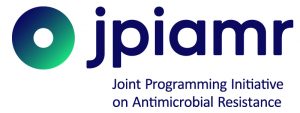
Coordinator:
 |
CNRS-UMR5086, Molecular Microbiology and Structural Biochemistry, TACC, Christian Lesterlin |
U1070 scientific Leader : Julien Buyck
In collaboration with:
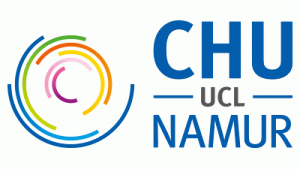 |
CHU UCL Namur (P. Bogaerts) |
 |
INRAE-UMR454 (MEDiS), Clermont-Ferrand (G. Jubelin) |
 |
Institute of Soil Science and Plant Cultivation, Pulawy (A. Marzec-Grzadzielà) |
Duration: June 2022 – May 2025
Total cost of the project: 747 k€
Specific U1070 cost: 100 k€
Summary :
One health research programs are needed to tackle the problem of Antimicrobial Resistance (AMR), which is a major concern worldwide. The STARS-TAP innovative strategy is based on Targeted-Antibacterial- Plasmids (TAPs) that use DNA conjugation to deliver CRISPR/Cas systems exerting an antibacterial activity on specifically targeted multidrug-resistant (MDR) strains. In vitro, we have shown that TAPs can selectively kill MDR strains by targeting the chromosome, or restore their susceptibility by targeting drug-resistance plasmids, without affecting non-targeted strains present in the bacterial population. Translating this in vitro proof of concept to various in situ settings would undoubtedly have a true impact by opening new intervention options to eliminate MDR strains from varied ecosystems. We will hence develop a library of TAPs directed against a range of clinically and environmentally relevant MDR strains or against specific genes conferring resistance to expanded-spectrum beta-lactams and carbapenems. We will evaluate TAPs ability to specifically eliminate MDR strains or plasmids from the microbiotas associated with the animal gut or from hospital wastewater. We will also address TAPs dissemination and ability to eliminate AMR strains or plasmids from environmental soil or the plant rhizosphere. This unexplored and versatile antibacterial strategy could be a promising approach for preventive treatment of human and animals gut colonized with MDR strains, or even to avoid AMR spread within anthropized environmental reservoirs such as agricultural soils and waswater.
Hired Personnel: 1 PhD student, Sophie Marolleau
Associated Publications :
Pharmacologie des nouveaux antibiotiques dans les PAVM à bactéries multirésistantes
Funded by : 

In collaboration with :
Inserm U1092 Limoges (O. Barraud), and CIC-1435 Limoges (B. François) and EMF Poitiers.
Duration :
October 2019 – October 2022
Summary:
La résistance aux antibiotiques est devenue un problème de santé publique majeur faisant l’objet de mesures prises tant au niveau national qu’européen. La problématique actuelle concerne surtout les bactéries à Gram négatif (BGN) multirésistantes, notamment les entérobactéries et Pseudomonas aeruginosa pour lesquels l’arsenal thérapeutique devient limité. Ces BGN multirésistants sont principalement rencontrés à l’hôpital chez des patients hospitalisés dans des unités de soins intensifs. De nouveaux antibiotiques associant une bêta-lactamine et un inhibiteur de bêta-lactamases sont désormais utilisés pour le traitement d’infections médiées par ces BGN. Ils sont notamment utilisés dans le domaine de la réanimation pour traiter des infections respiratoires survenant chez des patients intubés-ventilés (PAVM : pneumopathie acquise sous ventilation mécanique). Cependant, au cours du traitement, des résistances à ces antibiotiques (ceftazidime / avibactam et ceftolozane / tazobactam) ont déjà été observées en clinique en particulier chez P. aeruginosa.
Nous proposons de réaliser un projet de recherche translationelle (du laboratoire au patient) permettant de comprendre les mécanismes mis en jeu, couplé à une description pharmacocinétique / pharmacodynamique de ces associations qui permettra d’optimiser les doses et donc l’efficacité de ces molécules mais aussi de les préserver en évitant l’émergence des résistances.
Evaluation sur un modèle d’infection chronique murin (rat) de l’efficacité d’une nouvelle formulation de nanoparticules chargée en tobramycine (KuDa-tob)
Funded by : 
In collaboration with :
Kusudama Therapeutics, Euskadi, Spain
Pharmamodelling, Navarra, Spain
Duration :
April 2020 – January 2022
Summary :
This trilateral project consisting of KUSUDAMA THERAPEUTICS SL (Euskadi), PHARMAMODELLING SL (Navarra), and the INSERM unit U1070 pharmacology of Antimicrobial Agents from the University of Poitiers (Nouvelle-Aquitaine) aims to validate on animal models the competitive advantage of a new formulation of nanoparticles loaded with tobramycin, called KuDa-tob. This formulation has an extended-release profile and is designed to reduce the frequency of administration of tobramycin in cystic fibrosis patients with chronic Pseudomonas aeruginosa lung infection. KUSUDAMA THERAPEUTICS will synthesize and characterize independent batches of kuDa-tob in order to carry out preclinical tests on animals. To validate the concept of sustained release, pharmacokinetic studies in the lungs and plasma of healthy animals (mice, rats, and pigs) will be performed, comparing the administration of KuDa-tob with tobramycin solution used in the clinic. PHARMAMODELLING will be responsible for the interpretation and modeling of the results of this study. Subsequently, an efficacy and pharmacokinetics study will be carried out on a model of chronic Pseudomonas aeruginosa infection in rats developed by INSERM U1070 of the University of Poitiers. The results obtained through this collaboration should make it possible to advance the development of KuDa-tob towards preclinical regulation and, possibly, towards phase I clinical trial. This project will also allow the creation of an international, but close, network, which will serve as a platform to develop the activities of the entities participating in the project.
Développement de nanoparticules de polymère chargées en colistine pour traiter les infections pulmonaires à bactéries multirésistantes : validations précliniques
Funded by : 
In collaboration with :
University of Zaragoza, Aragon, Spain (Manuel Arruebo)
Duration :
October 1st 2019 – March 31 2020
Summary :
Pseudomonas aeruginosa (PA) is a bacterium responsible for chronic pneumonia in patients with cystic fibrosis. These infections are impossible to treat due to the presence of multidrug-resistant bacteria (MR), and the presence of biofilms and viscous mucus protecting PA from the action of antibiotics (ATB). Colistin (COLI) is used by inhalation as a last resort ATB against these infections. However, resistance against COLI appears. To avoid this, the effectiveness of COLI could be improved by increasing its diffusion through the mucus and biofilms of the respiratory tract, where PA is protected from its action. Thus, the aim of the study is to develop inhalable nanoparticles (NP) of poly (lactic – co-glycolic acid), capable of diffusing and releasing COLI within these viscous media. The NPs containing the COLI will be produced in Zaragoza by electrospray. The most promising formulations will be selected on the basis of various criteria, including their ability to improve the diffusion of COLI and their aerosolization performance. This stage will be carried out jointly in Zaragoza and Poitiers. The best formulation will then be chosen for a pharmacokinetic study in rats after pulmonary administration. This project should make it possible to obtain a set of chemical, biological and pharmaceutical data necessary to consider or not a demonstration of the concept in humans.
Developing combinations of CO-ACTIVE antimicrobials and non-antimicrobials
Funded by : 
In collaboration with :
Erasmus University, Rotterdam, Netherlands (J. Mouton)
Uppsala University (L. Friberg / T. Tangden)
Université catholique de Louvain (F. Van Bambeke)
Ecole Nationale Vétérinaire, INRA UMR 1331 (A. Bousquet-melou)
Duration :
January 2016 – January 2020
Summary :
The CO-ACTION project aims to develop and provide a framework for evaluating and validating the effectiveness of antibiotic- and non-antibiotic combinations (COMs) in the preclinical setting based on pharmacokinetic/pharmacodynamic (PK/PD) principles, with a specific emphasis on Neglected and Disused AntiBiotics (ND-AB) as well as COMs with non-antibiotics (NA) both for human and veterinary medicine. To fulfill this ambitious goal, 6 work-packages with 6 interacting partners were developed involving several steps in the development of useful COMs and are executed partly sequential, partly in parallel: screening for CO-ACTION between ND-AB and NA in a collection of strains with well described resistance mechanisms, selecting potential synergistic COMs, subsequent validation using PK/PD experiments and modelling and finally testing COMs in animal models.
A full PK/PD work-up and analyses form an important part of the process. The interaction between ND-AB from at least 6 different classes, including Polymyxin B will be determined using checkerboard experiments in 10 well characterized Gram-negative (e.g. P. aeruginosa, K. pneumoniae) multidrug resistant strains and analysed by surface response modelling. In parallel, a high throughput system (the oCelloscope) will be applied to allow efficient screening for large numbers of COMs.
The CO-ACTION of clearly synergistic COMs will be quantified using kill-curves both in medium as well as intracellulary and PK/PD modelling will be used to predict effective dosing regimens vivo. Effectiveness of the most promising 3-6 COMs will be determined in up to 4 different available animal model systems : a neutropenic mouse thigh and lung model, a rat model and effectiveness in a pig model to evaluate emergence of resistance in the gut of different COMs. A full PK/PD evaluation, including in vivo checkerboards will be performed and assessment of concentrations in ELF and microdialysis. The potential of the COMs in patients will be evaluated by Monte Carlo Simulations of the COMs both using plasma as well as ELF concentrations and derived PK/PD relationships and PD targets. The development of useful COMs requires a high level of interaction between specialized partners. This international collaboration of six partners in CO-ACTION will lead to synergistic antibiotic COMs useful in patient care by bringing together specialists that each have significant expertise in their own field.
Combatting Bacterial Resistance in Europe – Carbapenem Resistance

Funded by : 
In collaboration with :
Basilea, GSK, Pfizer
CHU de Limoges (B. Francois)…
Duration :
September 2015 – September 2018
Summary :
The COMBACTE-CARE project aims to shed new light on the best ways to understand and treat ‘carbapenem-resistant enterobacteriaceae’ CRE infections. It will also run clinical trials of a novel antibiotic combination (Aztreonam/Avibactam) designed to tackle a sub-type of CRE infections for which there are limited or no treatment options.